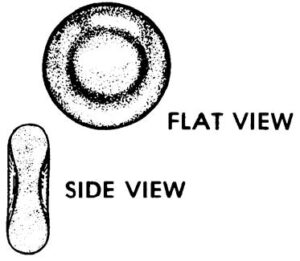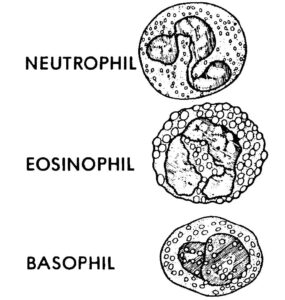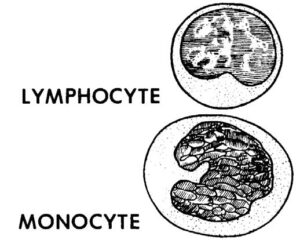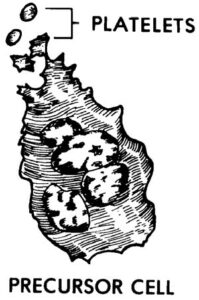1-1. INTRODUCTION
Adequate substitutes for human blood do not exist. There are many kinds of blood expanders, blood thinners, and aids for ailing blood, but none of these can substitute for the unique properties and functions of blood in the human body. Without sufficient human blood, our bodies would stop functioning.
This is why the blood banks make frequent requests for donations from healthy individuals. As a medical noncommissioned officer (NCO), you will be expected to perform your duties in peacetime and on the field of battle. Your subordinates will often ask why certain functions must be done. Using the knowledge contained in this lesson, you will have the answers for questions about human blood.
1-2. PROPERTIES AND FUNCTIONS OF THE BLOOD
a. Amount. Blood accounts for 7 to 9 percent of the body weight. A person weighing 150 pounds will have about 4 to 6 liters of blood. The actual amount of blood in each person’s body is affected by several factors, such as body size and age. The older the person, the less blood in his body. A big person has more blood than a small person and, all else being equal, a male has more blood than a female.
b. Functions. Blood is constantly in motion. Asleep or awake, the blood flows in a circulation system at almost the same rate. This process begins before we are born and does not stop until after death. Blood flows in virtually a closed system to all tissues of the body. It brings oxygen and nutritive substances to the capillaries (smallest blood vessels) and removes metabolic waste products and carbon dioxide, which are then eliminated from the body by the excretory organs. The blood coordinates activities of various organs by carrying chemical regulators called hormones. See paragraph 2-14 for a discussion of hormones. Blood regulates body temperature and protects the body against disease. Blood maintains acid-base equilibrium of the body (about pH 7.35 in the veins and about pH 7.39 in the arteries). See paragraph 2-6 for a discussion of acid-base balance.
c. Major Components. Blood has a liquid portion and a solid portion. The liquid portion is called plasma, which is about 55 percent of the blood’s volume. The solid portion (red cells, white cells, and other vital factors) makes up the remaining 45 percent.
1-3. BLOOD CELLS
The cells contained in the blood are of two main types: red blood cells (erythrocytes) and white blood cells (leukocytes). The erythrocytes are produced in the red bone marrow that is primarily present (in the adult body) in the sternum, ribs, hipbones, and cranial bones. Most of the granular leukocytes are also formed in the red bone marrow. Most of the non-granular leukocytes are formed in the lymph nodes, thymus gland, and the spleen.
a. Erythrocytes. The erythrocyte is the red blood cell (RBC) of the blood. The mature RBC contains about 34 percent hemoglobin (a complex iron-bearing protein which transports gases). Erythrocytes are produced primarily in the red marrow of the spongy bones. Hemoglobin is the main functioning component of the cell. The RBCs transport oxygen from the lungs to the tissues and carbon dioxide from the tissues to the lungs. The hemoglobin protein is composed of carbon, nitrogen, and iron. Hemoglobin carries 98 percent of the oxygen. Less than 2 percent is carried in simple solution in the plasma. These cells have an average life span of 80 to 120 days. When a red blood cell becomes too old, it is broken down into its elements (especially in the spleen). A portion is carried to the liver and excreted as “bilirubin” with the bile. This gives the bile its golden-yellow color. The iron is retained and either reused or stored for future use. (See figure 1-1.)

b. Leukocytes. There are two main groups: granular and nongranular leukocytes. These are further subdivided into neutrophils, eosinophils, and basophils, which are granular. Nongranular are classed as lymphocytes and monocytes.
(1) General functions. The leukocytes remove invading antigens (that is, bacteria) and, to some extent, transport and distribute antibodies. In antigen removal, some nongranular and granular leukocytes show directional movement, subject to chemical stimulus (chemotaxis). In this way, they are attracted to substances, which they must either transport or engulf. The process of engulfing and destroying bacteria (phagocytosis) is the prime function of leukocytes. (See figure 1-2.)

(2) Types and their specific functions. The three types of polymorphonuclear (called polys or granular) are neutrophils, esoinophils, and basophils. The neutrophils increase in number when fighting pyrogenic infections (fever producing). They decrease in number when reacting to toxic substances. This can occur with certain drugs. The esoinophils will increase in reaction to allergy or parasitic infections, and they will decrease in reaction to adrenocortical hormones. The basophils will increase in the presence of leukemia (but their exact function is not known). Lymphocytes and monocytes are nongranular leukocytes. The lymphocytes are believed to be directly involved with the antibody production. They increase in number in the presence of certain infections such as mononucleosis. Monocytes will increase during tuberculosis and protozoal infections. All types of leukocytes will increase during leukemia and will decrease because of acquired immunodeficiency syndrome (AIDS). (See figure 1-3.)

c. Thrombocytes. Thrombocytes are commonly called “platelets.” They are detached irregular shaped fragments of their precursor cells (which are found in the bone marrow). These precursor cells are giants in size compared to the other blood cells. The platelets live for only 3 to 5 days. The platelets contain different clotting factors and other components that are either known or presumed to participate in the clotting process. They clump together to form a plug in the initial phase of controlling bleeding. This process is speeded up by thrombin, an enzyme involved in blood clotting. A deficiency in platelets causes a tendency to bleed. The platelets possess ameboid movements. This property is very necessary for the clotting process. (See figure 1-4.)

